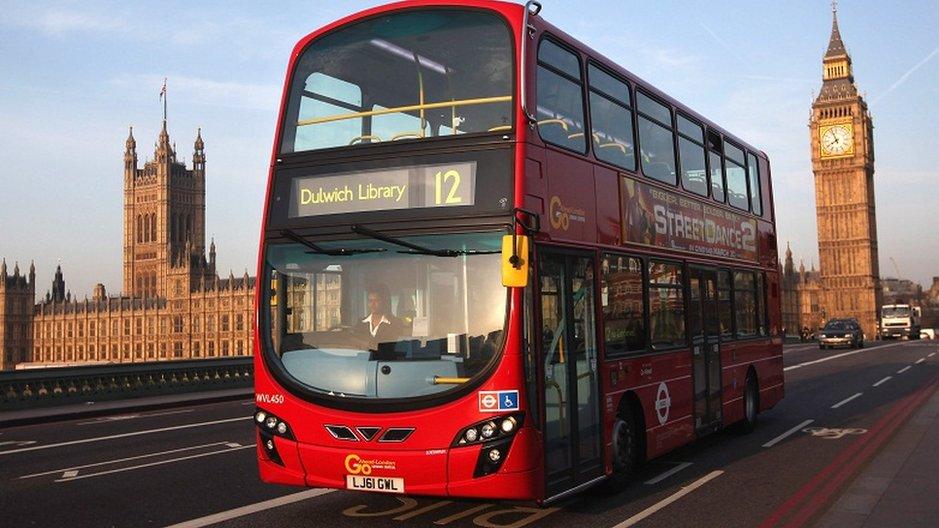The beginning of the end of cash and the paper ticket?
- Published
- comments
New technology means you can 'touch in' with a bank card as well as an Oyster card
It's been a long time coming but from Thursday passengers can pay for bus fares using a contactless bankcard, external.
It uses the same technology you are now seeing in high street sandwich shops.
It will cost the same price as an Oyster single fare - £1.35 - but for now it will not be part of the daily cap. So it's meant to replace cash.
I've been given a look behind the scenes at the work that's been going on at Transport for London, external (TfL).
Every bus is now 3G integrated and it sends a signal straight away checking the card has enough funds on it.
Next generation
For the last year a small van has been driving around all the bus routes testing the 3G signal. In the back a "windmill" has been rigged up which touches an Oyster card onto a reader.
More than 35,000 passengers a day get on a bus and then realise they don't have enough on their Oyster card so this will offer an alternative.
This is the start of big changes for ticketing in London.
Next year we will see this on the Tube and the Docklands Light Railway (DLR) but for now though it won't be included in the daily fare cap, which means passengers never spend more than the price of an equivalent Day Travelcard.
The Oyster card has been a big success but using bankcards is the next generation.
Other cities are watching very closely and many won't bother introducing their own smartcard systems if the bankcard system works.
The cost of rolling it out on the buses is £5m and for the Tube it will be £74m but the payback is substantial for TfL.
It thinks it can save £30m a year by not collecting cash from buses.
It's not difficult to see that one day nearly everyone will be using a bankcard or Oyster on the transport network.
- Published13 December 2012

- Published12 December 2012

- Published17 October 2012
